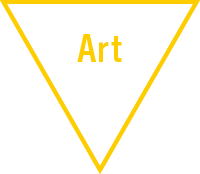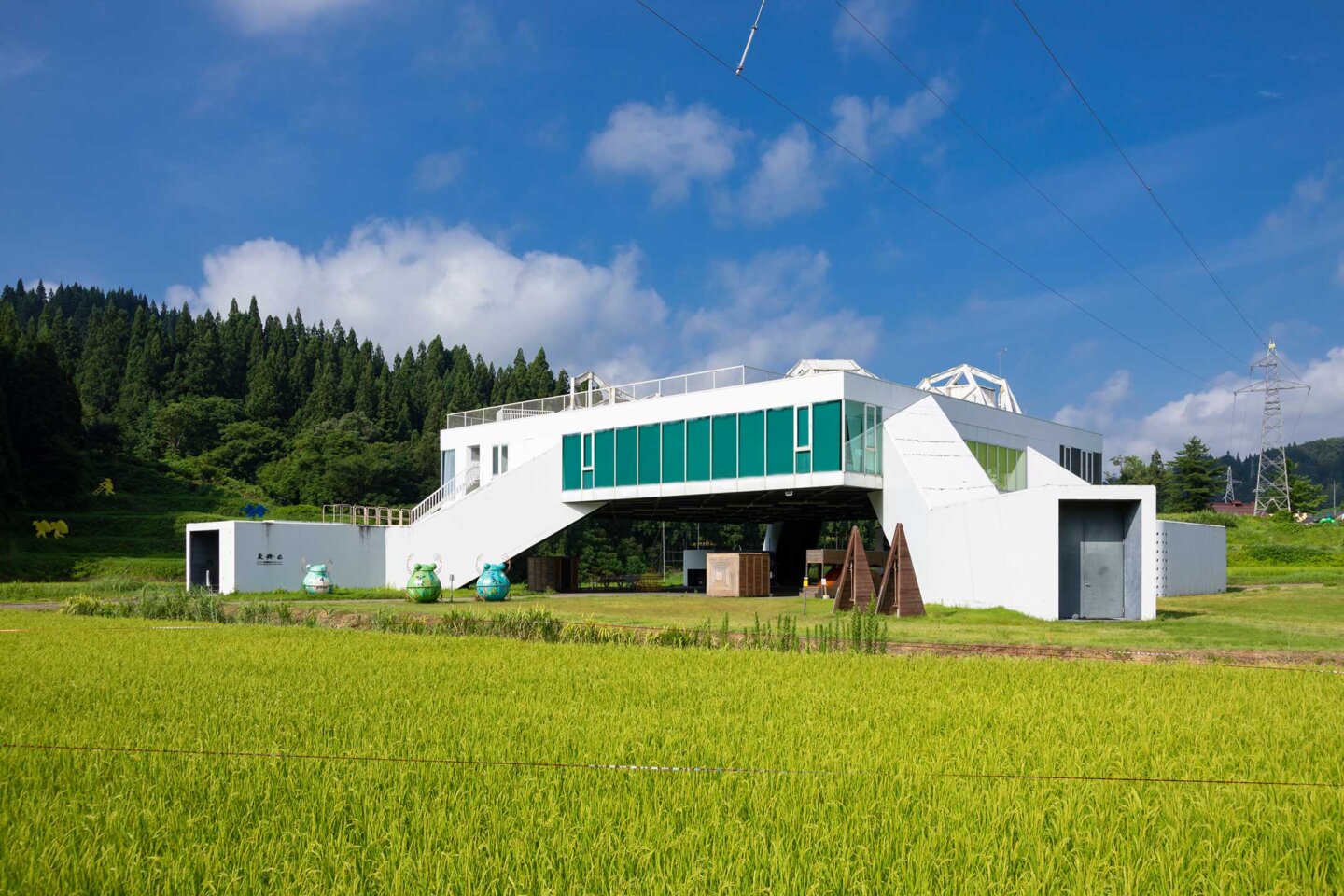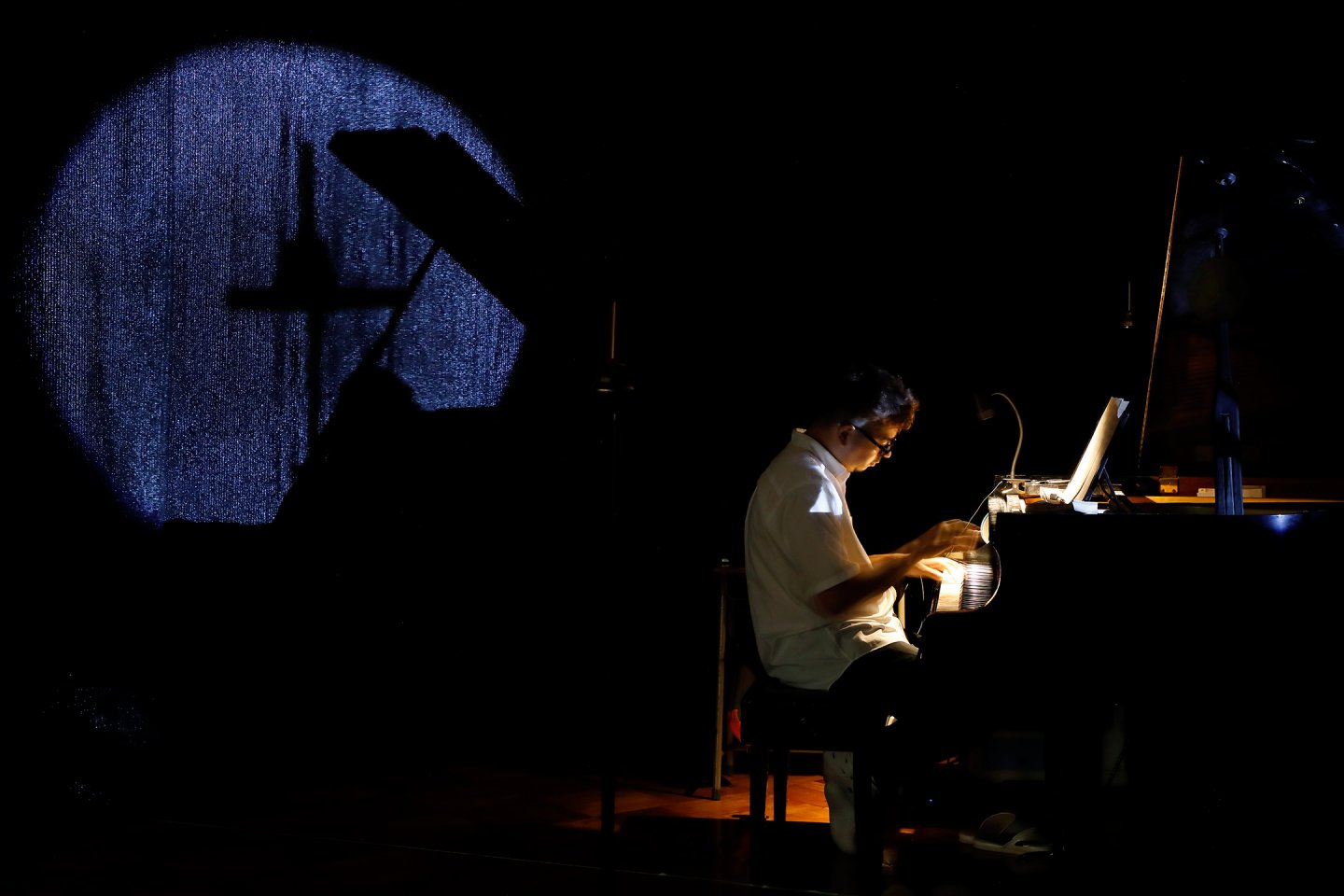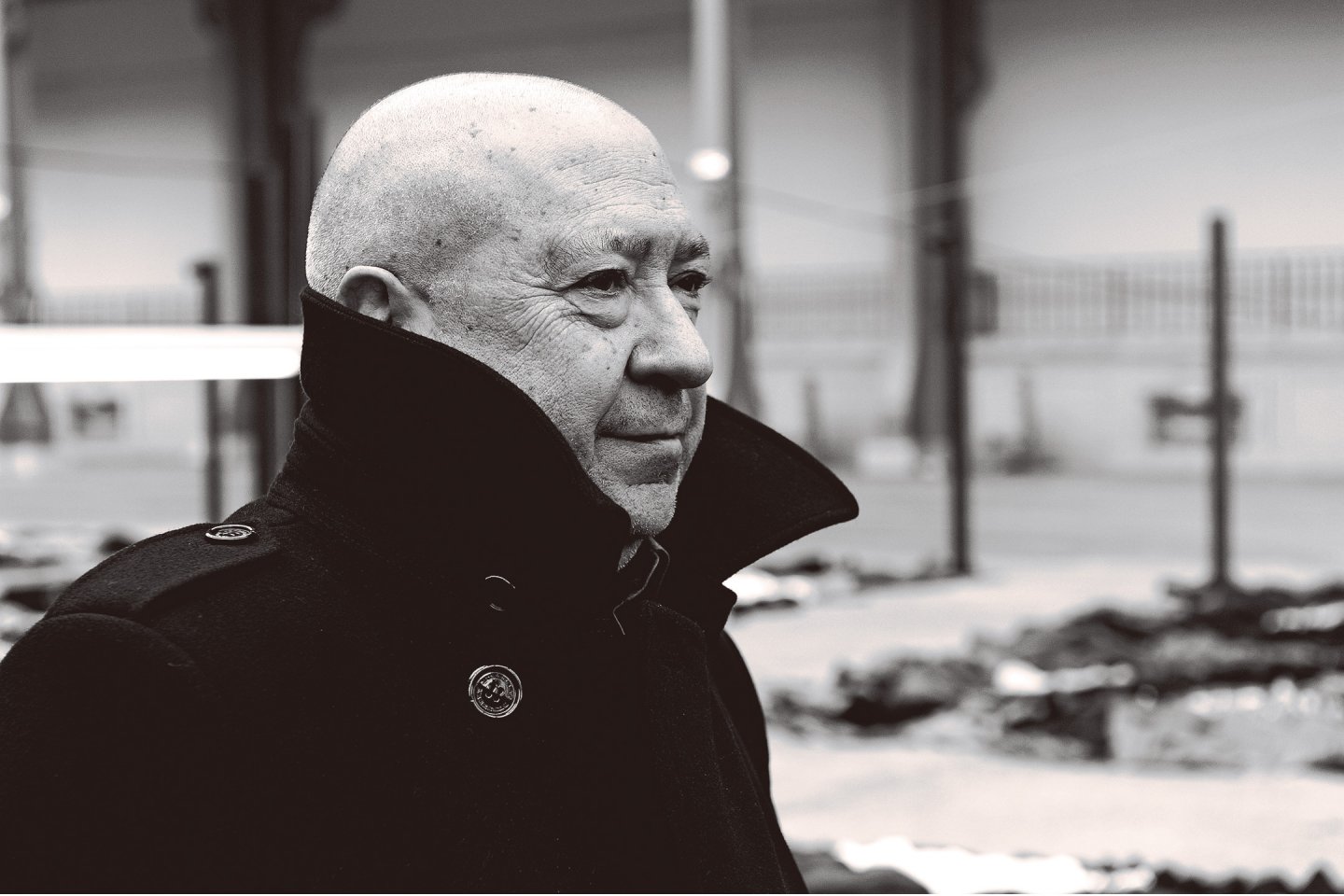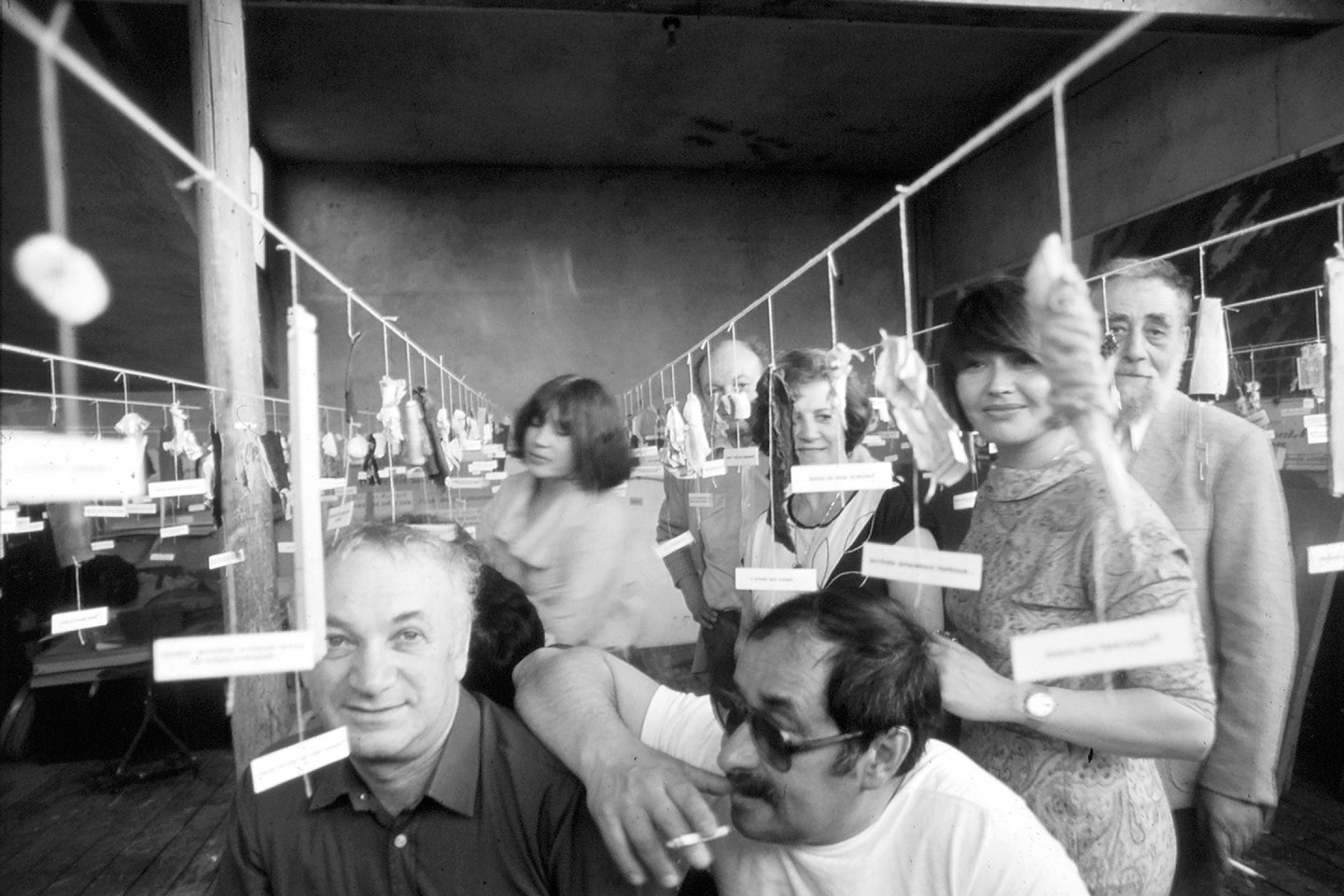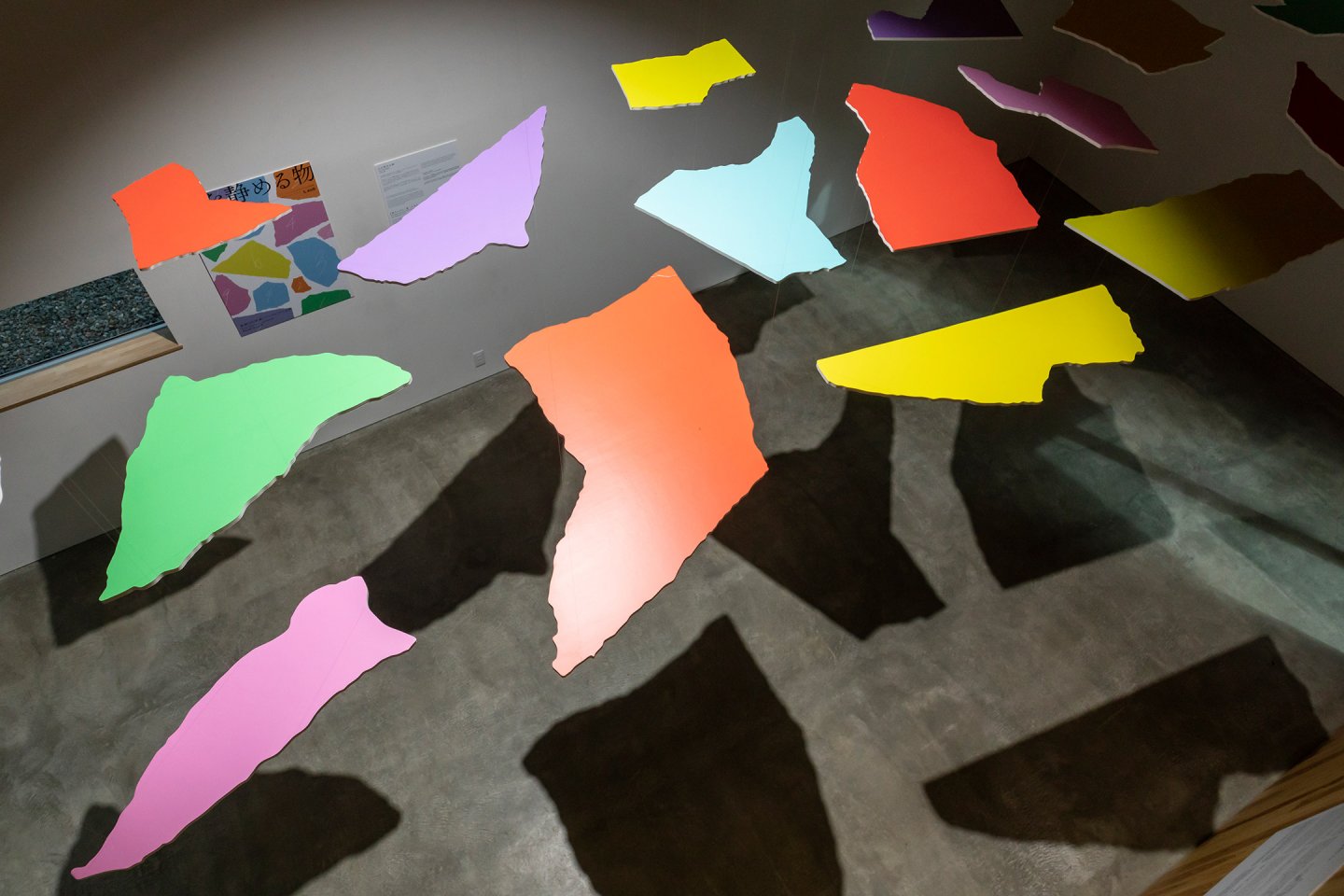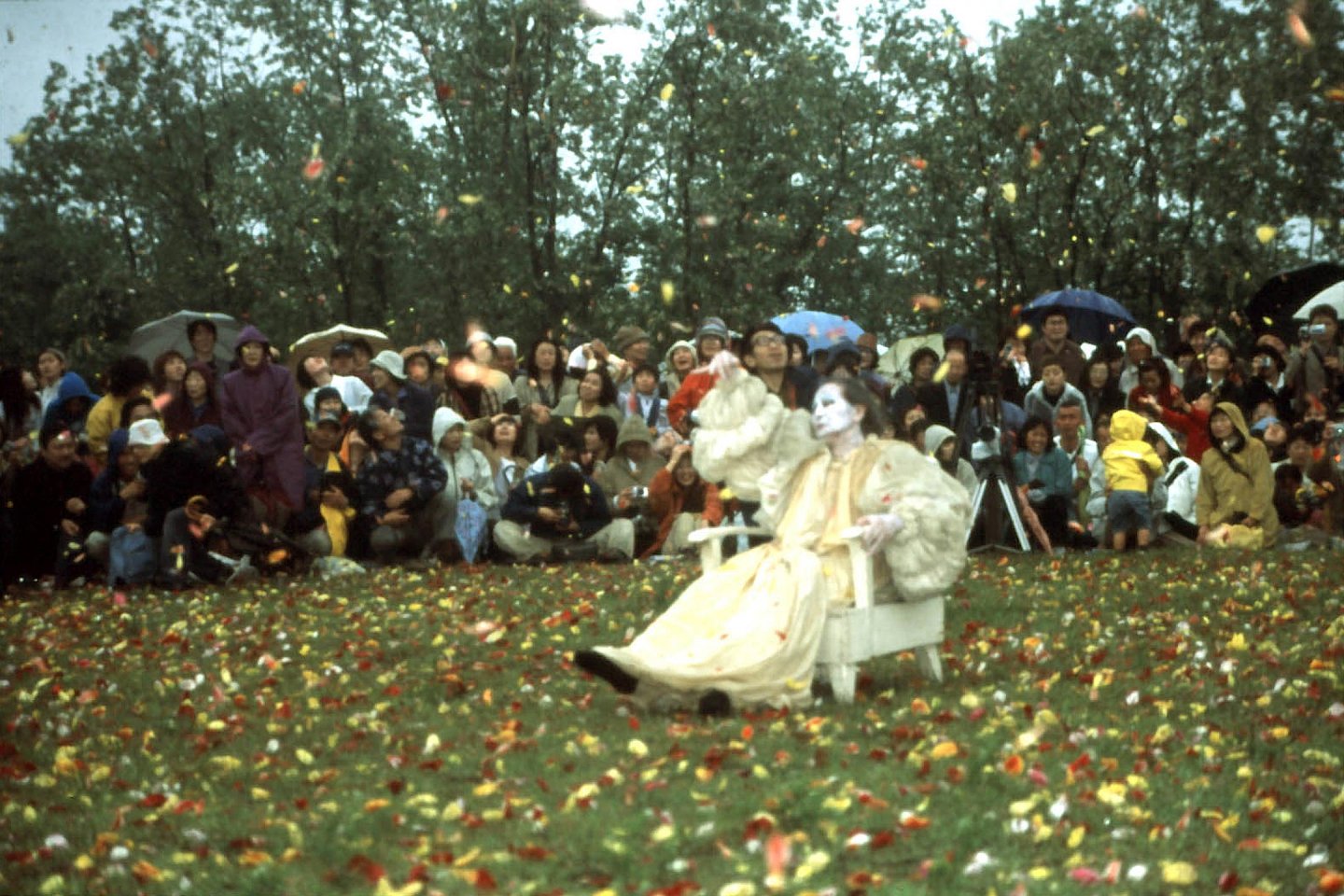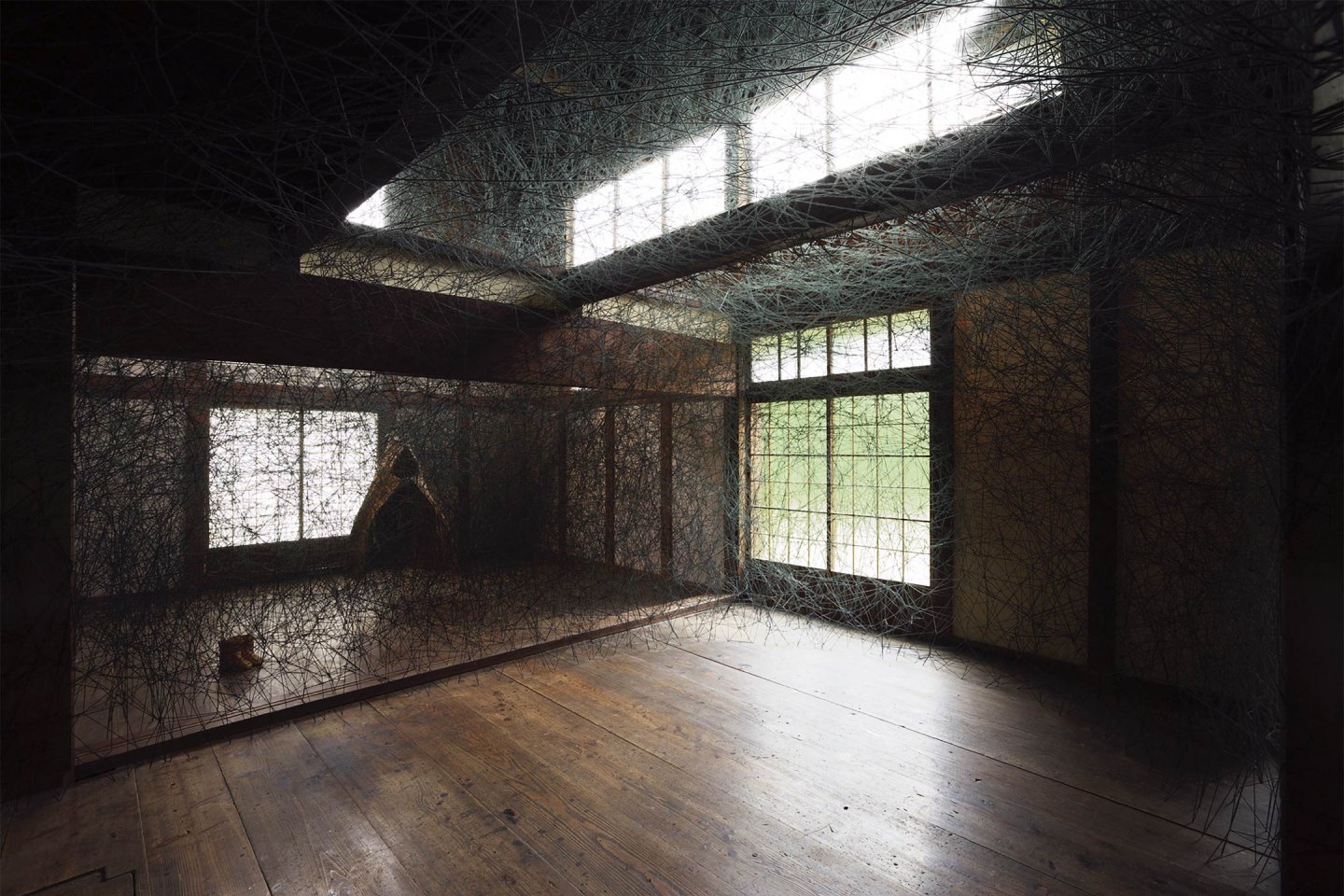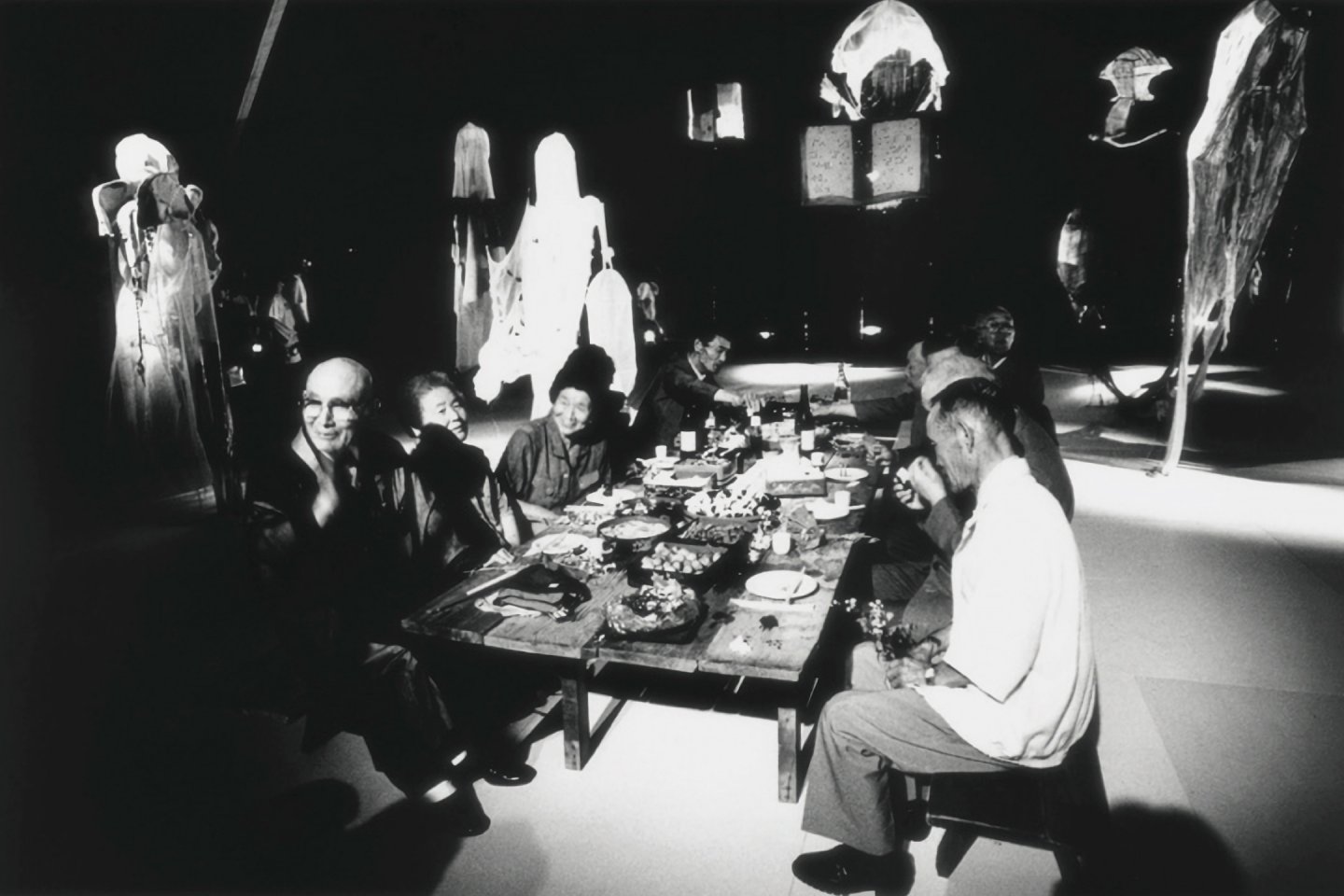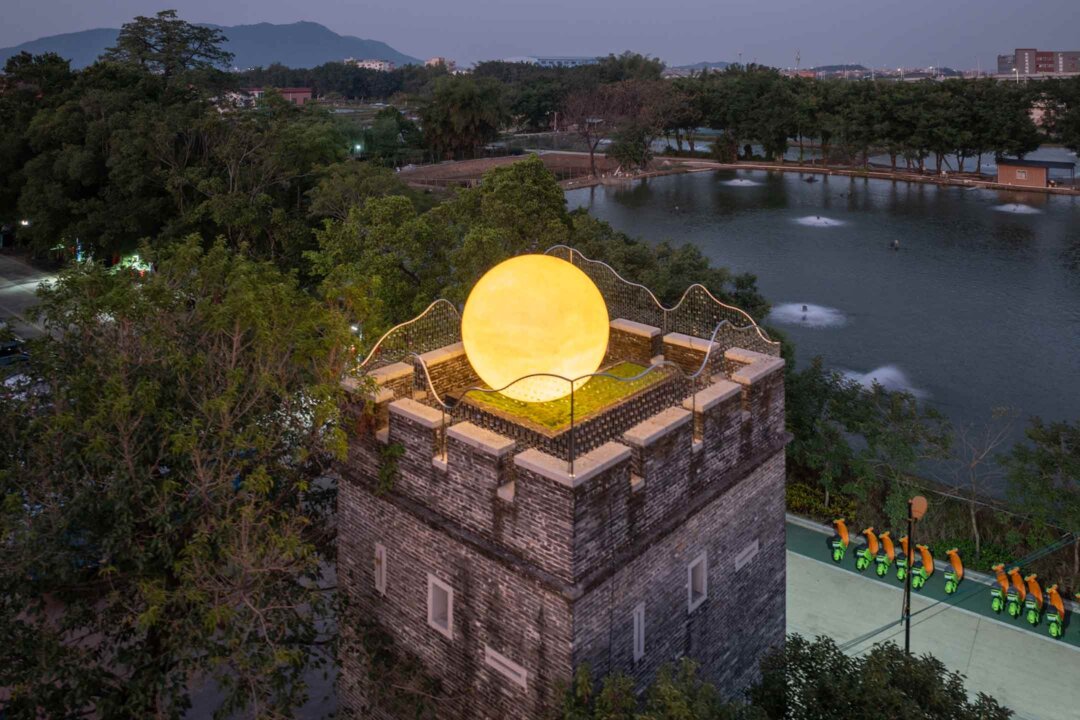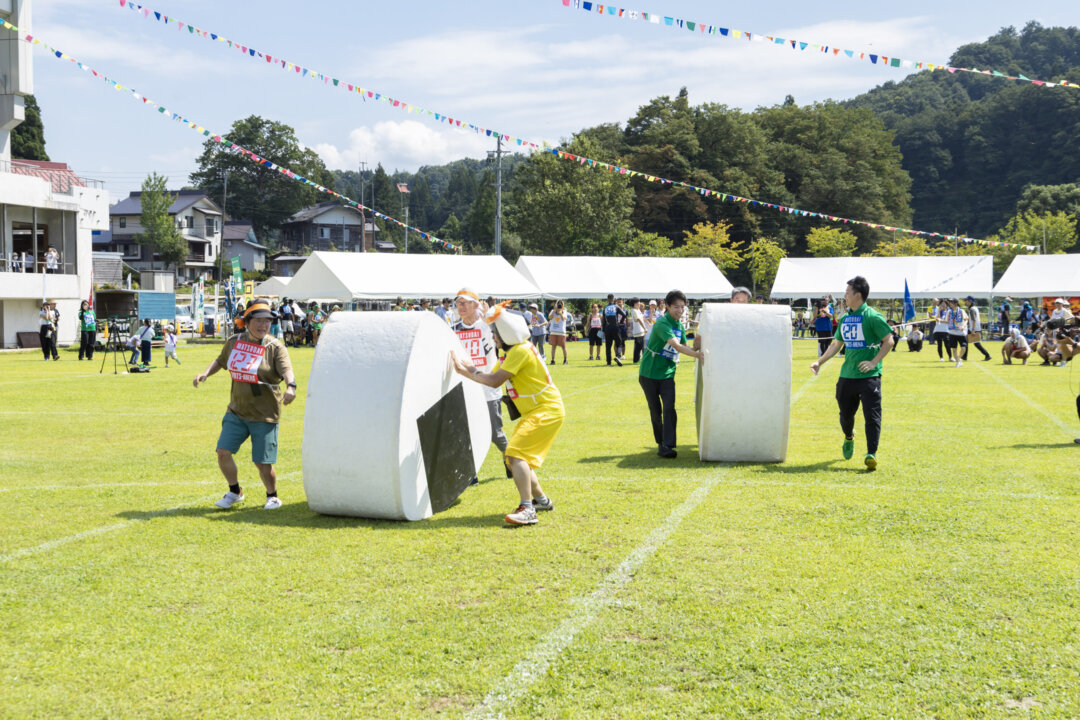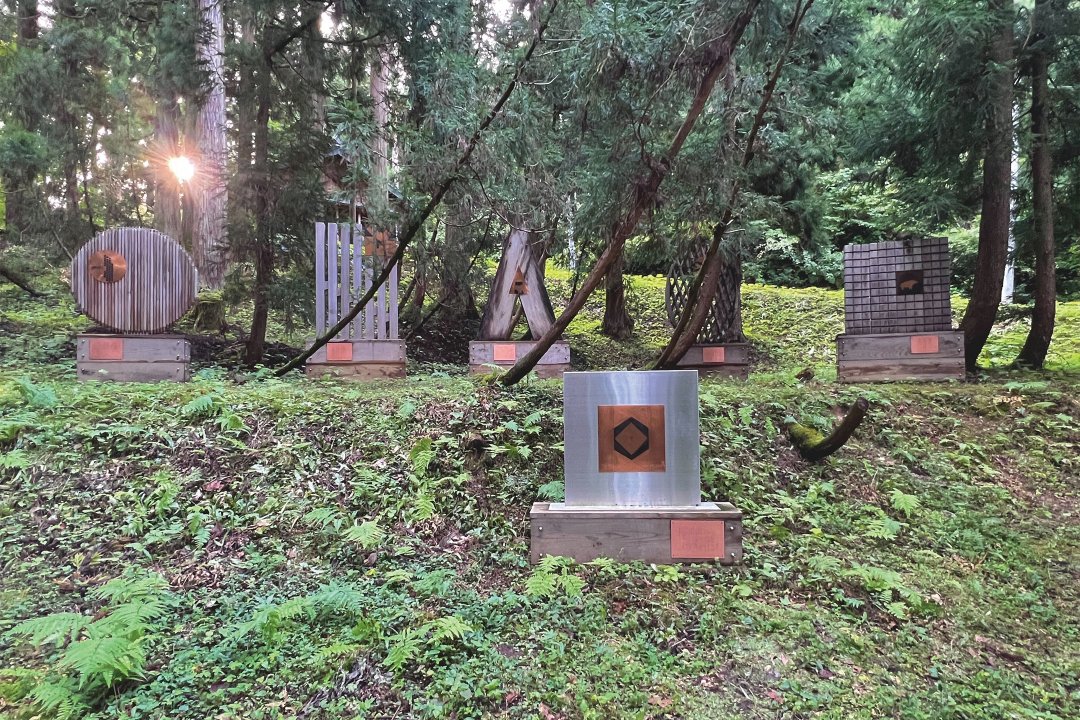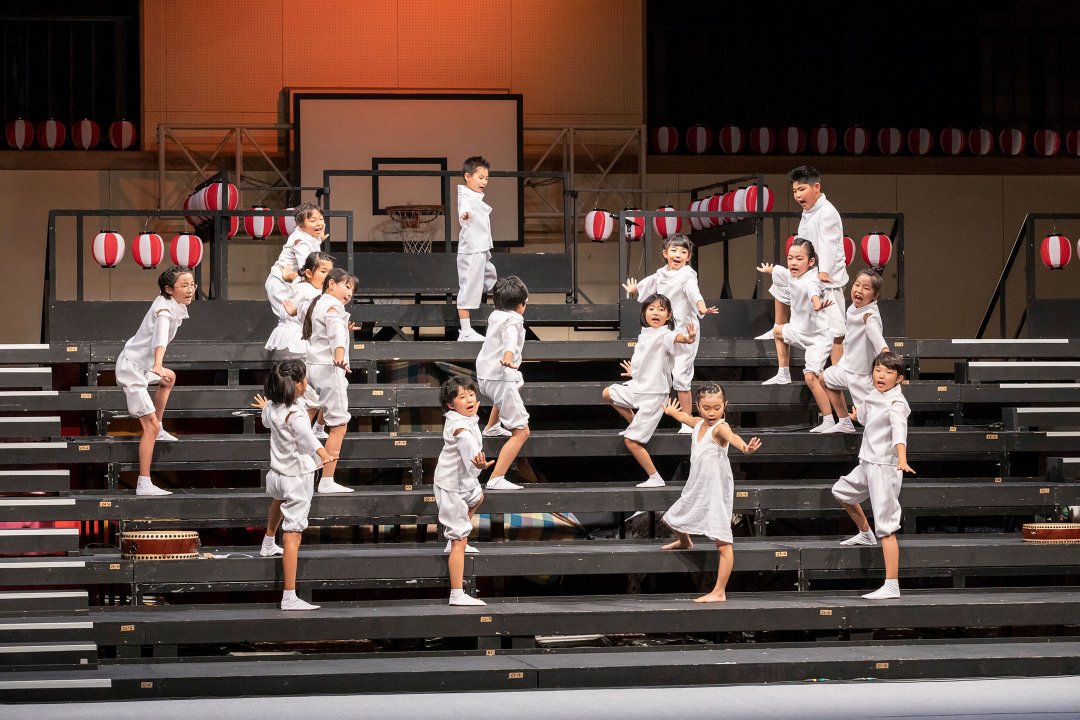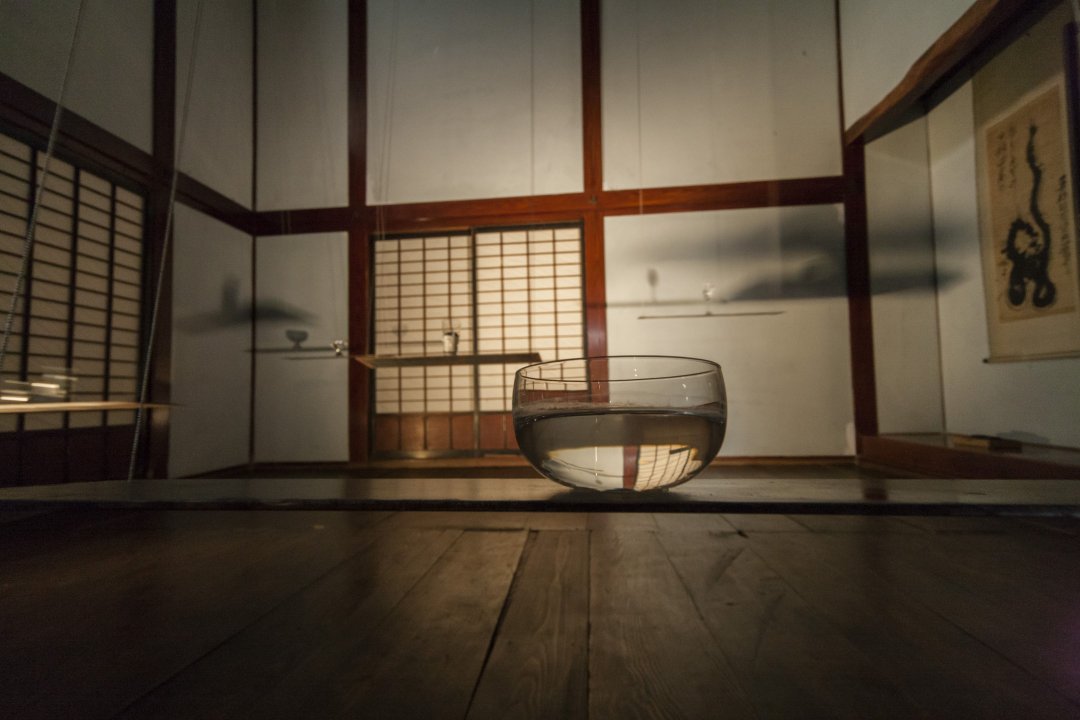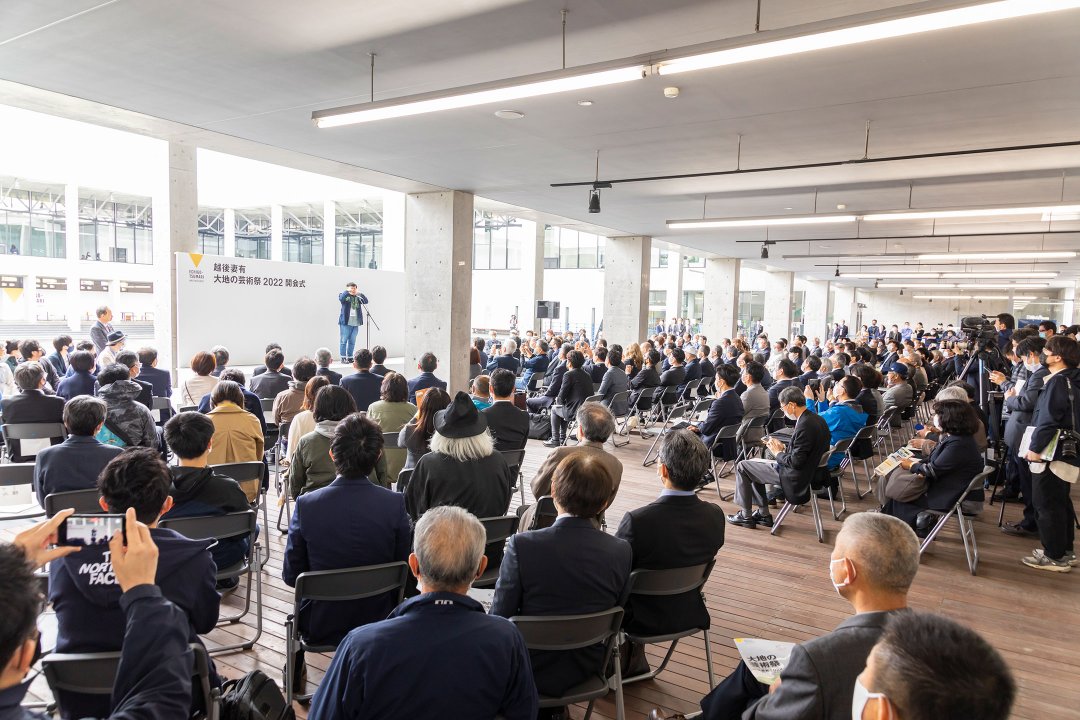Thinking 21st century art in the world from Niigata
Echigo-Tsumari Art Field - Official Web Magazine
Artwork / ISOBE Yukihisa
"Where Has the River Gone?"(2000/2018)
Photo by NAKAMURA Osamu
Artwork / ISOBE Yukihisa
"Where Has the River Gone?"(2000/2018)
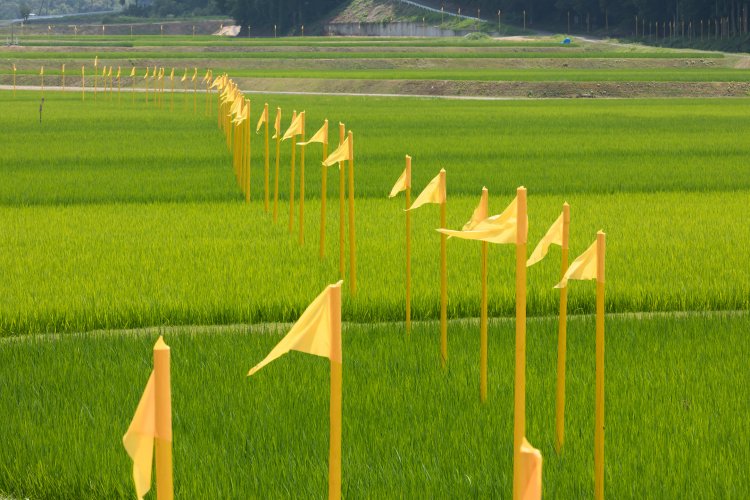
Photo by NAKAMURA Osamu
From “Earth Day” to “Echigo-Tsumari Art Triennale”
Artist Yukihisa Isobe’s perspective on environment and humans in the world amid the pandemic
Text & Edit by WATANABE Ayana (Art Front Gallery)
25 May 2020
On 22 April 2020, the world amid the Covid-19 pandemic commemorated the 50th anniversary of Earth Day(*1), which was first celebrated in New York. ISOBE Yukihisa, an artist who has been deeply involved with Echigo-Tsumari, had in fact made a great contribution to the first Earth Day 50 years ago.“Humans are part of nature” –a concept that forms the foundation of the Echigo-Tsumari Art Triennale (ETAT) was indeed conceived in collaboration with Isobe during its planning phase. On the occasion of Earth Day’s 50th Anniversary, we spoke with Isobe, who has been creating dynamic artworks concerning the relation between the environment and human beings since the first edition of the Triennale, and asked him to share his thoughts on the past, present and future, as well as his vision for the next ETAT
*1 Earth Day was an event planned and initiated by experts such as Denis Hayes, Gaylord Nelson (a US Senator at the time), and Ian McHarg in New York in 1970, with aims to alert the drains on environmental resources such as water, soil and living creatures, as well as urban plight. As the first such attempt in the world, an auto-ban was implemented on Fifth Avenue between 14th to 59th Streets that transformed the entire area into a pedestrian precinct. It became known as a civic movement that communicated environmental issues to the world, with various efforts continuing today.
ISOBE: I worked as a member of the organizational team of the first Earth Day, creating posters and the “air-structured dome,” where experts ran teach-ins that aimed to communicate environmental awareness across the world. Ever since this day, over the last 50 years, international frameworks to discuss global warming and energy issues have been developed. However, the situation has drastically changed due to the unexpected spread of the COVID-19 infection.
We now see that air pollution has improved in big metropolises like Beijing, New York, and New Delhi, and jellyfish are spotted swimming through Venetian canals, which have been notoriously subject to water pollution. What do these facts tell us? I would imagine that from now on we will be required to change the way in which we approach and engage with environmental issues.
While it is said that a paradigm shift will occur in post-COVID-19 society, in my eyes, the current situation appears similar to that in the period of social change in New York fifty years ago. As is the phrase, “history repeats itself,” the experience I was fortunate to confront in New York at the time could in fact suggest lessons for the future. Earth Day was an important turning point in my life, and thus the celebration of its 50th Anniversary had been extremely impressionable to me.
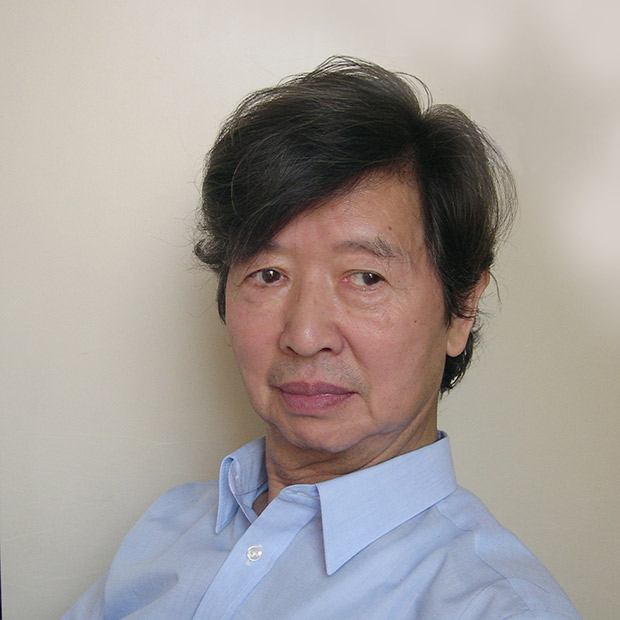
Profile
ISOBE Yukihisa
Born in Tokyo in 1935. Isobe started his career making prints in 1950′ and created repetitiously emblems using materials such as plaster mixed with marble, emboss, and water color drawings and prints. After moving to New York in 1965, he was taken by environmental and ecological interest studying at University. At that time, he tried to integrate graphics and colors used in these scientific field with expression in the art, introducing plan and maps as a repetition into his works. He was closely related to Echigo-Tsumari Art Triennale from the beginning, where he installed a number of yellow poles to indicate the original position of Shinano River (2000) or to visualize the mad slide (2015).
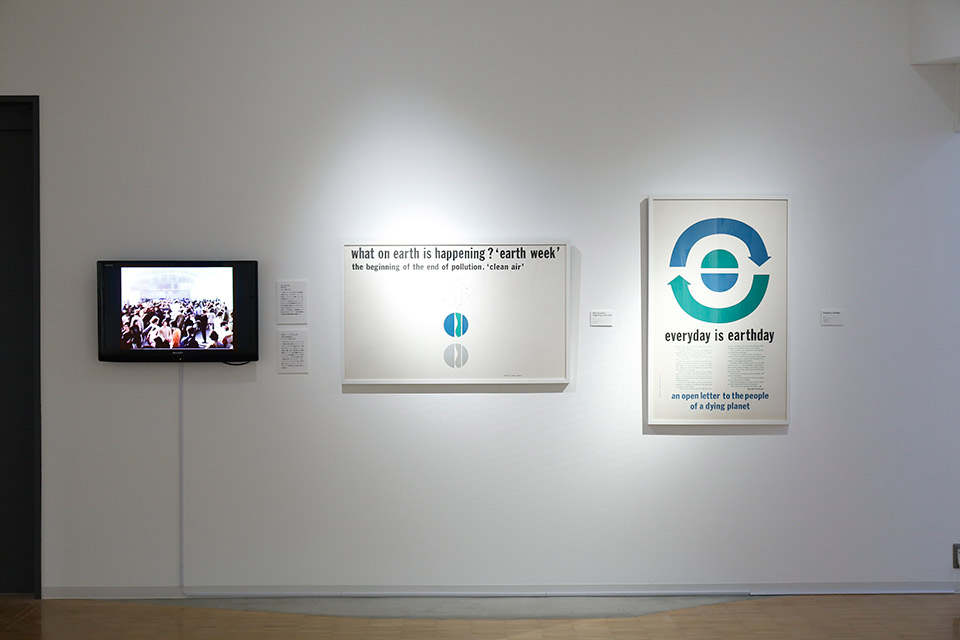
Posters for first Earth Day designed by Isobe. Photo: installation view from the exhibition in SOKO 2018, Keizo Kioku
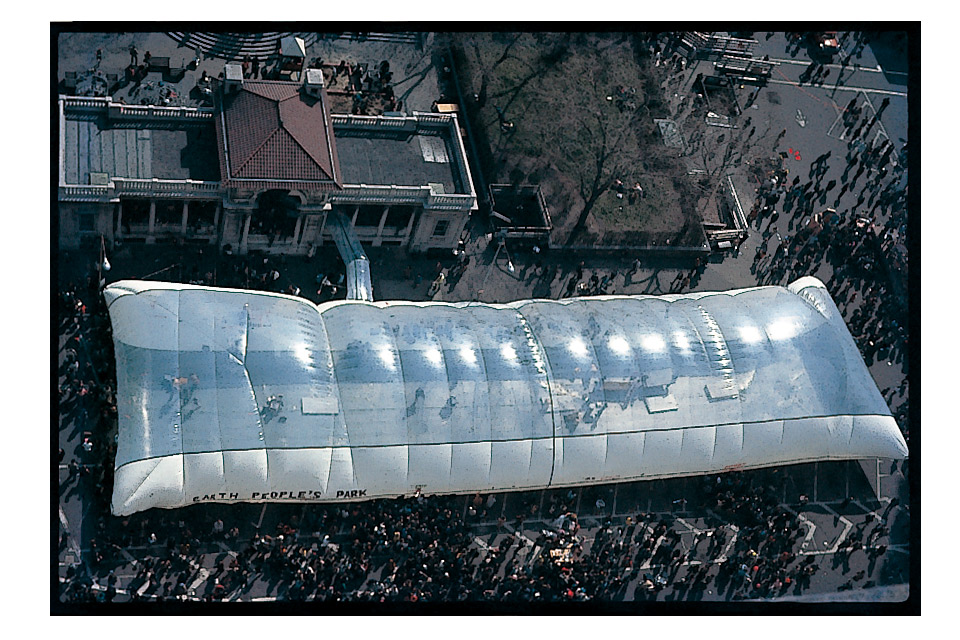
“Air-structured Dome” appeared in auto-banned Union Square area, New York, 1970.
Isobe Yukihisa was born in Tokyo in 1935. Having enrolled in Tokyo University of the Arts in 1954, he vigorously created works as a favorite of the avant-garde art movement of the day. After graduating from university, however, he fell in love with New York en route to Europe for his exhibitions in 1960s, relocating his life and practice there. New York at the time was a place where various social and cultural phenomena led by young people were bringing about a drastic change to American society, including campaigns against the Vietnam War and the hippie movement, as well as the rise of pop art and modern dance. Starting his life in New York with desires of embracing these circumstances, Isobe developed an interest in “ecological planning,” which was gaining increasing attention then, and embarked on a career as an ecological planner after studying under Ian MacHarg, a leading expert in the field.
ISOBE: Granted a work-permit in the States, I worked at the Park Division of New York City Council and was involved with facility maintenance and fund-raising events for Phoenix House on Hart Island –a public rehabilitation facility for narcotic addicts. The environmental improvement plan for the island and facility also became a theme for my master thesis. Many human bones were found during the fieldwork I conducted on this island.
This was because there was a city-operated prison on the island from the 1890s, and it for long had also been home to a cemetery to burry its deceased convicts. In later years in 1960s, the Phoenix House was built in order to respond to the drug problems that emerged due to social unrest, and then in 1978, it became an off-limits, uninhabited island. I can’t help having mixed feeling after hearing news that the island is now being used as a temporary mortuary for the increasing victims of COVID-19. That news reminds me of the people and colleagues I met and worked together with on the island.
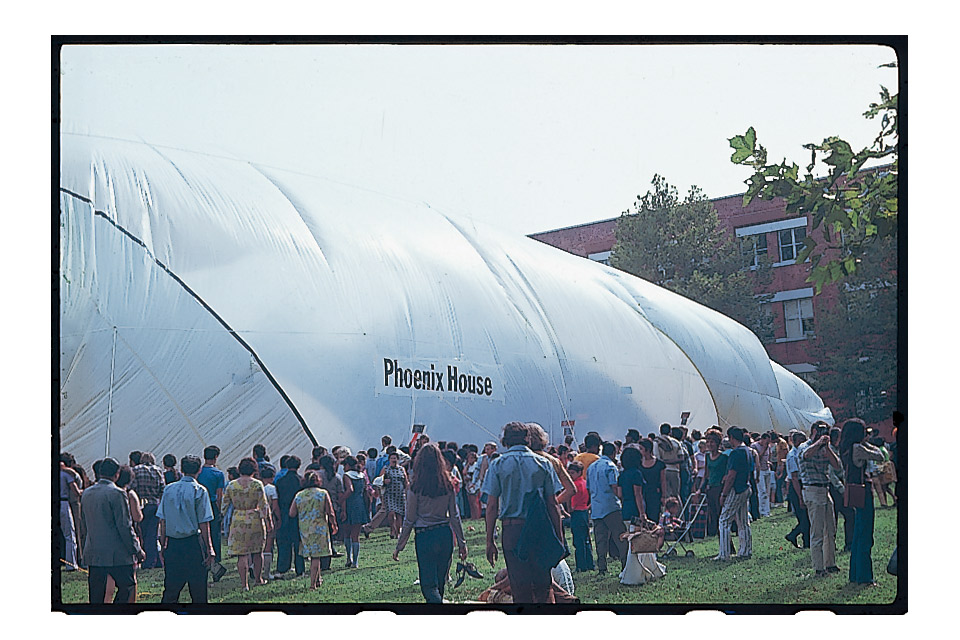
In 1970 and 1971, “Phoenix House Summer Happening” has organized as fund raising event for the facility. Isobe installed “Air-structured dome” here, too.
The basic theory and methodology of ecological planning is to present concrete proposals on how to make the best use of ecological resources and how to prepare for disasters, assuming that natural resources for human activities have both potential and limitations. As an ecological planner, Isobe returned to Japan, and has been engaged with drafting disaster prevention policies and running environmental research for urban planning and development across Japan(*2).
The encounter between Isobe and Echigo-Tsumari had been brought about due to Isobe being an ecological planner. During the planning phase of ETAT, General Director Fram Kitagawa asked Isobe to run an investigation of the environmental resources of the Echigo-Tsumari region. The investigation revealed the distinctive geographical landscape featuring river terraces created by the Shinano river, heavy snowfalls caused by seasonal wet winds from the Sea of Japan hitting the mountains, and characteristic vegetation of rich nuts trees. These findings defined the framework of the festival, that ETAT should be based on the environmental conditions and the life led by local people in Echigo-Tsumari(*3).
*2 Amongst these investigations was the “Survey for Disaster Prevention Urban Structure Strengthening Plan in the Osaka Metropolitan area (1980).” Commissioned by the former National Land Agency, which was advancing the city resilience plan as a national policy for disaster prevention measures at that time, it served to predict the damages caused if an earthquake were to occur in Kobe and Rokko Mountain area. The outcomes of the research investigation will be presented as a part of the “Things Entangling” exhibition at the Museum of Contemporary Art, Tokyo, which has currently been postponed until further notice. It is extremely rare for such findings from environmental research to be presented as artworks in the context of a museum.
*3 The outcome of the research was exhibited along with a symposium at Nespace Niigata Omotesando in 1999, a satellite facility of Niigata Prefecture in Tokyo. It was also presented as a part of the exhibition held at Yukihisa Isobe Memorial Echigo-Tsumari Kiyotsu Soko Museum of Art in 2018.
“I believe that the first step toward establishing site-specific art, or art within a social space (land ownership, trade, the spirit of the age, transportation systems, scientific technology, power structures) is found in Isobe’s transition from a painter to an ecological planner, after which he resumed his creative activities. From Isobe’s experience, I thought that we could learn ways to understand art more universally, refusing the arbitrariness of artists. That is why I met with Isobe in planning the Echigo-Tsumari Art Triennale. ”
(Fram Kitagawa, ‘Yukihisa Isobe Memorandum’, “Yukihisa Isobe Collection – Where has the River Gone?”, 2018, Gendaikikakushitsu publishers)
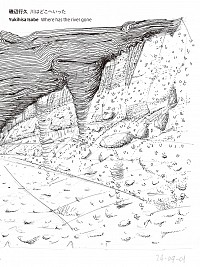
Published in August 2018
Published by Gendaikikakushitsu publishers
Price 2500JPY + tax
Size B5
Page 174
Changing land and human life in Echigo-Tsumari
---- Artwork that represents a relationship with nature
As an artist, Isobe has indeed produced numerous impressionable artworks for ETAT. “Where Has the River Gone?” presented at its first edition, made visible the former current of the Shinano River by setting up countless numbers of yellow poles with flags across the rice fields. Human intervention, including dam construction, has changed the appearance and flow of the river, which was once serpentine. People’s lives change as the flow of the river changes. The work represented such relations between nature and humans.
Ever since, Isobe has continued to participate in ETAT. At the last edition in 2018, he not only recreated his past artworks, but also launched the Yukihisa Isobe Memorial Echigo-Tsumari Kiyotsu Soko Museum of Art, where his retrospective exhibition was held tracing over 50-years of his life history as an artist spanning from his debut to his involvement with Echigo-Tsumari.
"Where Has the River Gone?"(2000/2018)photo by NAKAMURA Osamu
"The Shinano River once flowed 25meters above where it presently flows"(2003/2018)photo by NAKAMURA Osamu
"Natural levee of old Shinano river has excavated here in this area"(2009)photo by MIYAMOTO Takenori + SENO Hiromi
"A Monument of Mudslide"(2015/2018)photo by NAKAMURA Osamu
"A Monument of Siphon" (2018)photo by KIOKU Keizo
"A Monument of Siphon" Night version (2018)photo by KIOKU Keizo
"Yukihisa Isobe Memorial Echigo Tsumari Kiyotsu Soko Museum"(2017)photo by NAKAMURA Osamu
"Yukihisa Isobe Memorial Echigo Tsumari Kiyotsu Soko Museum"(2017)photo by NAKAMURA Osamu
Yukihisa Isobe Memorial Echigo Tsumari Kiyotsu Soko Museum/Exhibition: World of Yukihisa Isobe - from code to environment(2018)photo by NAKAMURA Osamu企画展「磯辺行久の世界―記号から環境へ」(2018年)photo by NAKAMURA Osamu
How has depopulation occurred?- Vision for 2021
Isobe has already started conceiving a project for the next ETAT in 2021. It will be about interpreting how the phenomena of villages depopulated (“Genkai Shuraku”) and in danger of disappearing have occurred from the perspective of ecological planning. It is also anticipated to suggest a clue to post-pandemic changes in social awareness.
This discussion reminds me of the phenomenon of depopulation. While depopulation in the countryside has always been understood as a result of ageing and the declining birthrate in Japan, I believe that another reason for this is the lacking concept of fair trade in local industry and distribution systems. This is what I am essentially interested in. I would like to reveal these points at the next ETAT. I have heard that there will be more and more people migrating from large cities with concentrated population to rural areas due to the COVID-19 pandemic. Now that we expect as such, we should reconsider this point.
ISOBE: The idea of “fair trade” originated from the theory of ecological planning. To put it simply, it is an initiative to monitor and regulate environmental load, labor cost, and distribution systems that should compensate for the amount of water and pasture required, as well as soil polluted to produce one kilogram of beef (*4). It sets out appropriate economic, social, and environmental standards internationally for production, processing and distribution operation. It has facilitated highly contemporary discussions on various subjects, including measures against infectious diseases and the proliferation of drugs, which could be cunningly brought about through global supply-chains. Now, fair trade involves mainly developing countries, while it has started attracting attention even in Japan.
*4 With aims for “fair and just trading,” the fair trade label is that which is granted by Fairtrade International to products that meet international standards. It is an initiative to promote sustainable cycle from production to consumption through the purchase of products with the Fairtrade mark, which lead to supporting the life and community of producers.
Co-working with Isobe has changed my perspective on nature
I have been helping Yukihisa Isobe’s project every time since iWhere Has the River Goner started in 2000. Without relying on his imagination, Isobe creates artwork based on data of local nature and environment including crustal movement and reveals something hidden and unrecognized in a place where he presents artwork. Therefore, this project is not about placing poles, but it`s about leading people to learn the place. Since I began to engage with his project, it has changed my perspective of what I see in environment and given me a new index to feel nature when I see a mountain or wind direction. Serious natural disasters of these days have changed my views further. Because his artwork is made for temporary exhibits and removed after a certain period of time, I think it makes the artwork even more impressive and unforgettable to local residents.
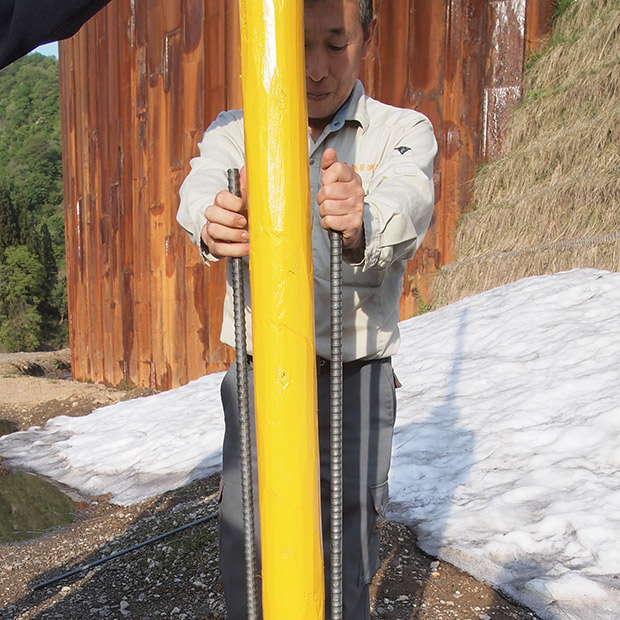
Profile
NAGUMO Noboru
Living in Nakasato area, Tokamachi-city. Land surveyor. He has been helping Isobe’s projects for ETAT since 2000.
General Information
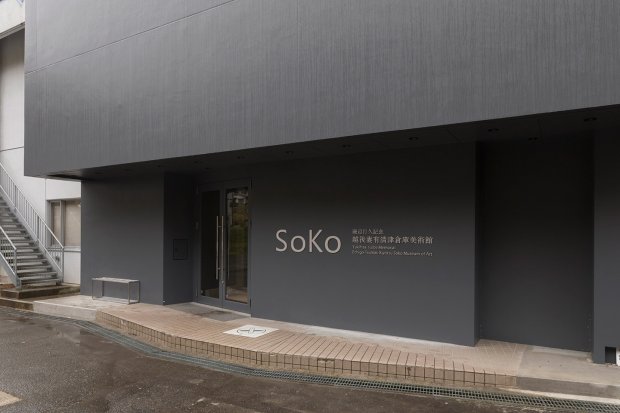
Isobe Yukihisa Memorial Echigo Tsumari Kiyotsu Soko Museum of Art (SoKo)
Isobe Yukihisa Memorial Echigo Tsumari Kiyotsu Soko Museum of Art (SoKo) was launched in 2015 in a renovated space that was a former gymnasium in the closed Kiyotsukyo Primary School. It is based upon an alternative concept of a museum as being a place for “presenting and storing artworks”. New part of exhibition spaces has been adding to school building section and it’s renewal open with a lot of donated works by Yukihisa Isobe in 2018. We are introducing those new collections and give a chance to vistor know the place in Echigo Tsumari : their life, their culture and information of the geographical features.
■Address : 1528-2, Kakumami, Tokamachi City, Niigata
■Open dates : Open in relation to special program of Tsumari Art field. For further information, please click here.
■Access:
・By bus
Echigo-Yuzawa Station → Kiyotsukyo Entrance, 5 minutes’ walk
〈Express〉Echigo-Yuzawa ~ Kiyotsukyo ~ Tsunan ~Morimiya Nohara
(Minami Echigo Kanko bus)
・By car
– Kanetsu Jidoshado -> ShiozawaIshiuchi IC -> Route 353, 20 minutes
–from Tokamachi Station Route 117, turn left at Yamazaki Crossing→Route 353, 30minutes
Parking provided
Mapcode : 253254097*18
■Official website : Click here





